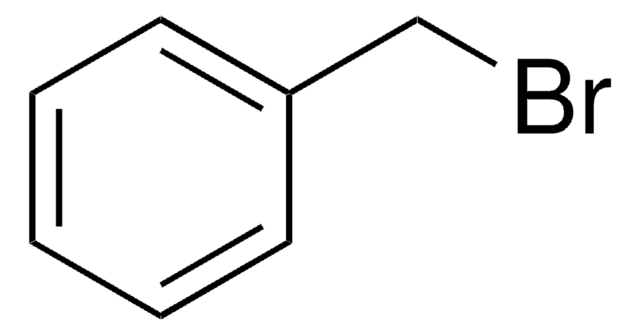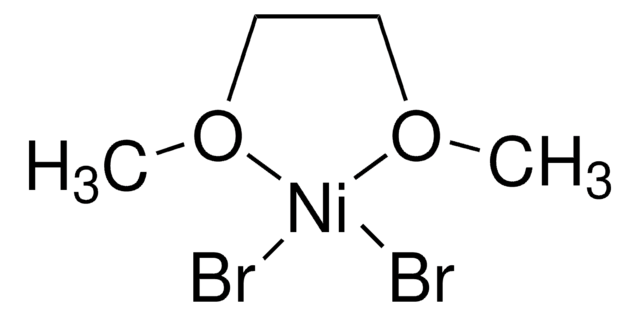Wszystkie zdjęcia(3)
Key Documents
209988
Zinc
dust, <10 μm, ≥98%
Synonim(y):
Zn
Zaloguj sięWyświetlanie cen organizacyjnych i kontraktowych
About This Item
Wzór empiryczny (zapis Hilla):
Zn
Numer CAS:
Masa cząsteczkowa:
65.39
Numer MDL:
Kod UNSPSC:
12161600
Identyfikator substancji w PubChem:
NACRES:
NA.22
Polecane produkty
ciśnienie pary
1 mmHg ( 487 °C)
Poziom jakości
Próba
≥98%
Postać
dust
przydatność reakcji
core: zinc
reagent type: catalyst
rezystywność
5.8 μΩ-cm, 20°C
wielkość cząstki
<10 μm
tw
907 °C (lit.)
mp
420 °C (lit.)
gęstość
7.133 g/mL at 25 °C (lit.)
ciąg SMILES
[Zn]
InChI
1S/Zn
Klucz InChI
HCHKCACWOHOZIP-UHFFFAOYSA-N
Opis ogólny
Zinc is an inexpensive, readily available versatile reagent in organic reactions and is commonly used as a reducing agent in organic synthesis. Zinc dust is used to reduce carbonyls, carbon-halide bonds, carbon-oxygen bonds, alkynes, and heteroatom bonds such as N-N and N-O bonds. It is also used to prepare various organozinc reagents. Additionally, Zinc has been used in several well-known named reactions, like the Reformatsky reaction, the Knorr pyrrole synthesis, the Serini reaction, and the Simmons-Smith cyclopropanation.
Zastosowanie
Reducing agent; used for preparation of organozinc reagents, Reformatsky reagents, and the Simmons-Smith reagent (cyclopropanation).
Zinc is also used as a:
Zinc is also used as a:
- Reductant in the hydrothermal CO2 reduction to formic acid in batch reactors.
- Catalyst in the synthesis of propargylamines by one pot, three component coupling of aldehydes, amines and alkynes in acetonitrile.
This page may contain text that has been machine translated.
Hasło ostrzegawcze
Warning
Zwroty wskazujące rodzaj zagrożenia
Zwroty wskazujące środki ostrożności
Klasyfikacja zagrożeń
Aquatic Acute 1 - Aquatic Chronic 1
Kod klasy składowania
11 - Combustible Solids
Klasa zagrożenia wodnego (WGK)
WGK 2
Temperatura zapłonu (°F)
Not applicable
Temperatura zapłonu (°C)
Not applicable
Środki ochrony indywidualnej
Eyeshields, Gloves
Wybierz jedną z najnowszych wersji:
Masz już ten produkt?
Dokumenty związane z niedawno zakupionymi produktami zostały zamieszczone w Bibliotece dokumentów.
Klienci oglądali również te produkty
Nicholas A Isley et al.
Green chemistry : an international journal and green chemistry resource : GC, 2015, 307-307 (2014-12-23)
Alkyl bromides and chlorides can be reduced to the corresponding hydrocarbons utilizing zinc in the presence of an amine additive. The process takes place in water at ambient temperatures, enabled by a commercially available designer surfactant. The reaction medium can
Activated zinc dust
Smith CR
Synlett, 2009(09), 1522-1523 (2009)
Knochel, P.
Chemical Reviews, 93, 217-217 (1993)
Sara Eyal et al.
Journal of nuclear medicine : official publication, Society of Nuclear Medicine, 50(5), 798-806 (2009-05-01)
Studies in rodents indicate that the disruption of P-glycoprotein (P-gp) function increases drug distribution into the developing fetus and organs such as the brain. To simultaneously and serially evaluate the effect of P-gp activity and inhibition on the tissue distribution
A viewpoint about the treatment of Wilson's disease.
Abdul Qayyum Rana et al.
The Canadian journal of neurological sciences. Le journal canadien des sciences neurologiques, 40(4), 612-614 (2013-06-22)
Nasz zespół naukowców ma doświadczenie we wszystkich obszarach badań, w tym w naukach przyrodniczych, materiałoznawstwie, syntezie chemicznej, chromatografii, analityce i wielu innych dziedzinach.
Skontaktuj się z zespołem ds. pomocy technicznej



